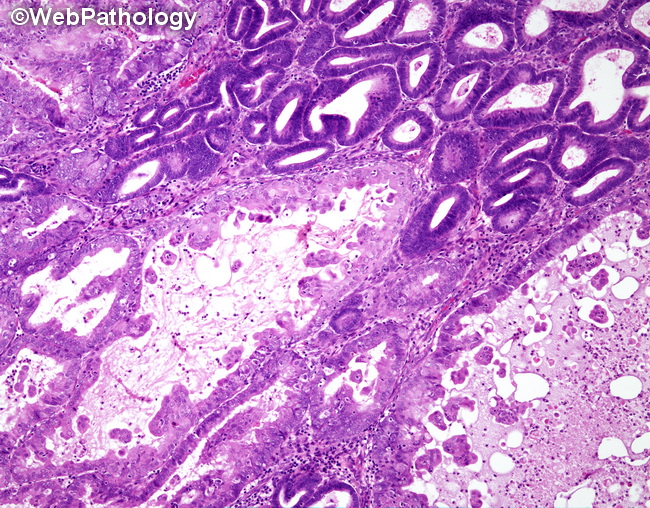Endometrial Hyperplasia : Natural History


Comments:
Nonatypical endometrial hyperplasia tends to regress spontaneously in the vast majority of cases. Progression to carcinoma occurs in less than 2% of cases. The mean duration of progression is about 10 years. Atypical endometrial hyperplasias are more likely to progress to carcinoma, if left untreated. This outcome is seen in about 25% of cases. The mean duration of progression to carcinoma is about 4 years. Both atypical endometrial hyperplasia and endometrial carcinoma share certain driver mutations in certain oncogenes and tumor suppressor genes. When atypical hyperplasia is diagnosed on endometrial biopsy or curettage specimens, the reported risk of concomitant endometrial carcinoma ranges from 17% to as high as 50% in various studies. Endometrial carcinomas with associated hyperplasia tend to be well-differentiated tumors with lower risk of recurrence and better survival than those without concomitant endometrial hyperplasia. (Reference: Montgomery BE, Daum GS, Dunton CJ. Endometrial Hyperplasia: A Review. Obstetrical and Gynecological Survey 2004; Vol. 9, No. 5; 368-378.) About this image: Atypical endometrial hyperplasia (upper left) with concomitant endometrioid carcinoma, FIGO Grade I.



